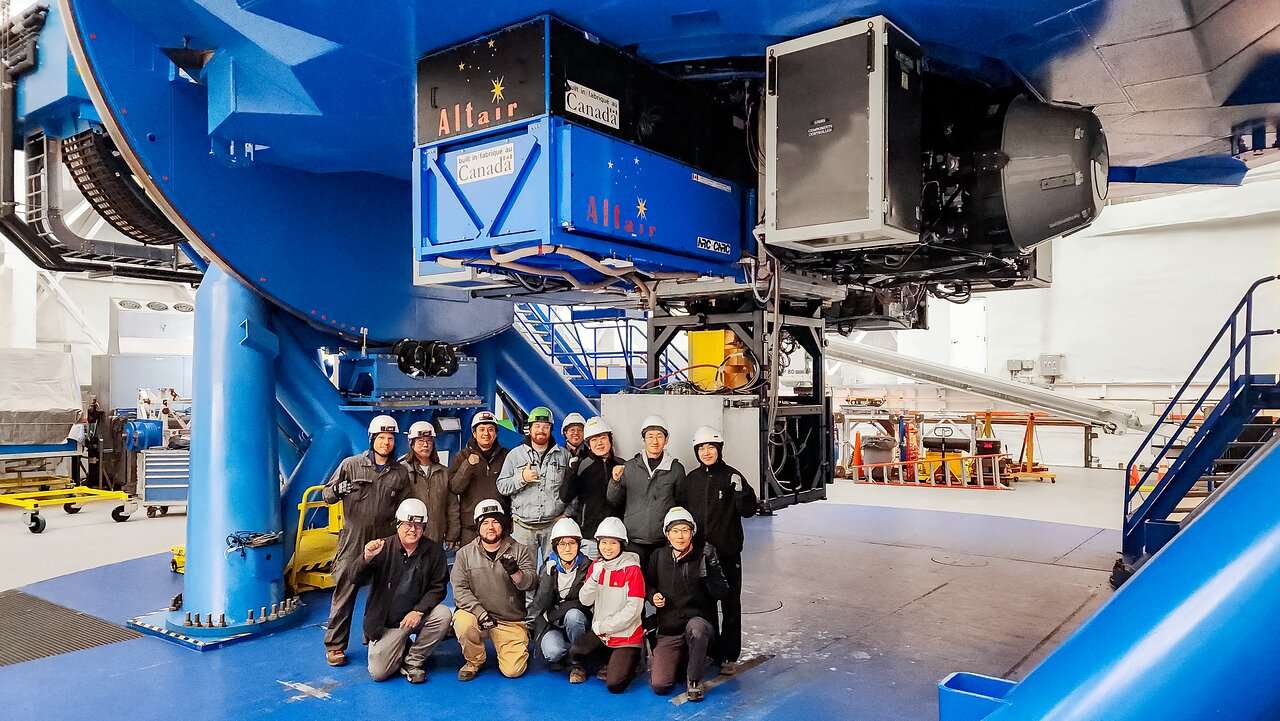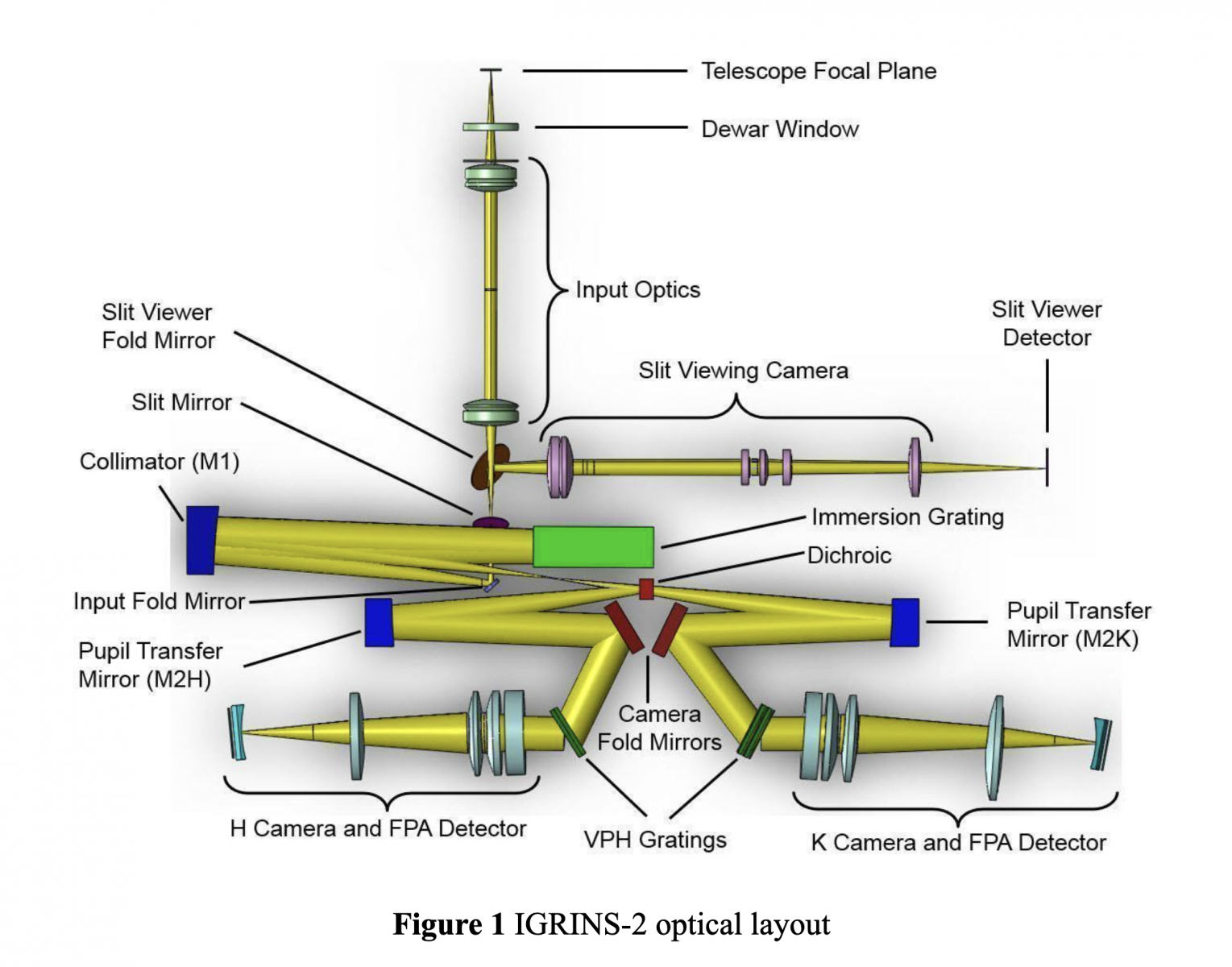Immersion GRating INfrared Spectrograph 2 (IGRINS-2)
IGRINS-2 is the yellow box seen above staff from KASI.
Credit: C. Park (KASI)
The Immersion GRating INfrared Spectrograph 2 (IGRINS-2) is a high-resolution near-infrared spectrograph capable of detecting light in the wavelength ranges 1.49–1.80 μm (H band) and 1.96–2.46 μm (K band) in a single exposure. This compact, near-IR spectrograph is mounted at the Cassegrain focus of the Gemini North telescope. IGRINS-2, based on the original IGRINS design, was developed and built through a collaboration between Korea Astronomy and Space Science Institute (KASI) and the International Gemini Observatory.
The main science goal of IGRINS-2 is to observe young stars being born inside dusty environments and study their early stages of development. It can see through dust with remarkable resolution, allowing astronomers to resolve details about stellar atmospheres and the structures of galaxies. With its ability to see through gas, dust, and other opaque materials, it is also well suited to studying brown dwarfs, exoplanets, the interstellar medium and the evolution of galaxies.
IGRINS-2 is equipped with a single slit measuring 0.33 x 5 arcseconds and utilizes a silicon immersion echelle grating as the primary dispersive element. A dichroic splits the incoming light beam into two channels — the blue and red arms — allowing simultaneous observation of the H and K bands. Each beam is further cross-dispersed using a separate volume phase holographic grating and each arm is equipped with its own Teledyne HAWAII-2RG (H2RG) spectrograph detector array.

First light spectra of NGC 7027, The Jewel Bug Nebula
Credit:International Gemini Observatory/NOIRLab/NSF/AURA, Image Processing: M. Zamani (NSF NOIRLab)
Science Highlights of IGRINS-2
New instrument—Science results pending
Quick Facts
- The combination of a silicon immersion grating and two volume phase holographic gratings allows it to be compact.
- Having no moving cryogenic parts makes IGRINS-2 operations, maintenance, and data analysis simple.
- Each arm (red and blue) has its own detector and produces its own spectrum in a different wavelength range.
- Instead of using a traditional shutter to control the duration of the exposure, the detectors capture images by measuring the difference in signal between two readouts: one at the start and one at the end of the integration.
|
Immersion GRating INfrared Spectrograph 2 (IGRINS-2) For scientists: Please find the most up-to-date details about the instrument offerings on the Gemini website. |
|
|
Site |
Maunakea |
|
Telescope |
Gemini North |
|
Type |
Spectrograph |
|
Wavelength range |
Red Arm (K band) 1.96–2.46 μm Blue Arm (H band) 1.49–1.80 μm |
|
Number of detectors |
2 Teledyne HAWAII-2RG (One for each arm) |
|
Detector format |
2048 x 2048 18-μm pixels |
|
Detector total size |
36.864 x 36.864 mm |
|
Spectral resolution: |
R ~ 45,000 |
|
Date of first light |
2023 |
|
Science Goals |
Young Stellar Object (YSO) evolution YSO disks Stellar populations and chemical evolution Radial velocity (RV) studies Solar System bodies |
|
Images taken with the instruments |
|
|
Images of the instrument |
|
|
Videos of the Instrument |
|
|
Press releases with the instrument |
|

